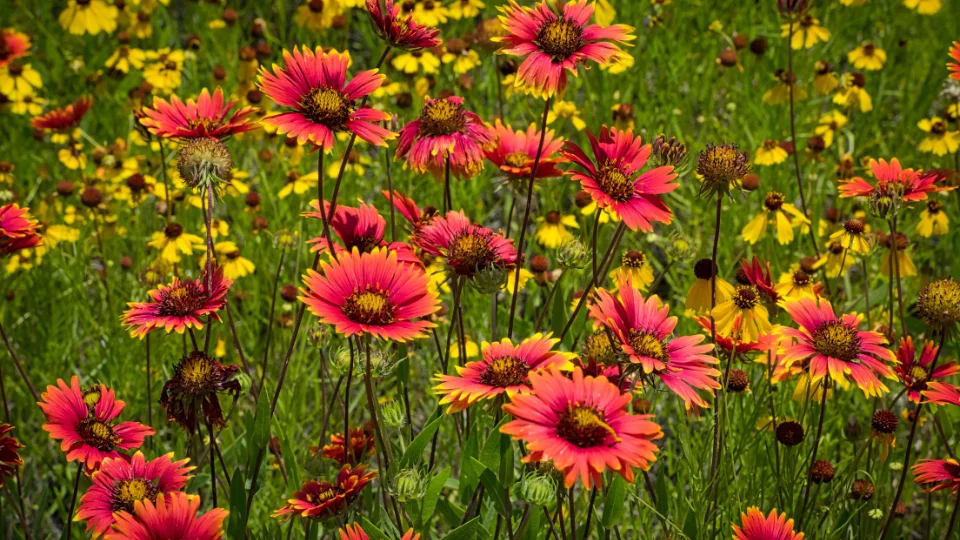Creating a sustainable and vibrant landscape begins with selecting the right Texas native plants. These plants are naturally adapted to local climate conditions, require less maintenance, and provide essential support to native wildlife. Whether you’re a homeowner looking to create a beautiful, low-maintenance yard or a property manager seeking a resilient, eco-conscious landscape, incorporating native plants enhances both beauty and biodiversity in your outdoor space.
Texas spans a wide range of ecosystems—from the arid deserts of the west to the humid coastal plains in the southeast. Native plants have evolved within these environments, making them exceptionally resilient. For example, species native to the Edwards Plateau are well-suited for dry, rocky terrain, while plants from the Gulf Coast Prairies flourish in wetter, marshy soil. Their natural adaptability allows them to thrive with minimal intervention, reducing the need for excessive irrigation or fertilization.
One of the standout advantages of using Texas native plants is their ability to conserve water. Many native species are drought-resistant and thrive with minimal watering, which is particularly beneficial in areas prone to seasonal droughts. Plants such as Blackfoot Daisy (Melampodium leucanthum) and Texas Sage (Leucophyllum frutescens) not only reduce your water bill but also contribute to a more sustainable, low-maintenance garden.
Native plants play a vital role in supporting the local ecosystem. They provide food, shelter, and nesting materials for a wide range of wildlife. Turk’s Cap (Malvaviscus arboreus var. drummondii), for example, attracts hummingbirds with its bright red blooms, while Gregg’s Mistflower (Conoclinium greggii) is a favorite among butterflies. Choosing native plants helps sustain pollinators, birds, and beneficial insects that are essential to the health of our environment.
When selecting native plants for your landscape, consider a mix of wildflowers, grasses, trees, and shrubs to create a layered, visually appealing environment.
Texas wildflowers offer striking seasonal color and are easy to care for. Bluebonnet (Lupinus texensis), the state flower of Texas, is known for its vivid blue springtime blooms. Indian Blanket (Gaillardia pulchella) is a hardy flower that displays rich red and yellow petals from spring through fall. For a reliable groundcover, Winecup (Callirhoe involucrata) produces deep purple flowers and thrives in full sun.
Incorporating native grasses adds texture and movement to the landscape. Little Bluestem (Schizachyrium scoparium) features blue-green foliage that turns reddish-orange in the fall, adding year-round interest. Sideoats Grama (Bouteloua curtipendula), Texas’s official state grass, is both ornamental and practical, with oat-like seeds that sway attractively in the wind. Gulf Muhly (Muhlenbergia capillaris) offers airy, pinkish-purple plumes in late summer, creating a soft, cloud-like effect in the garden.
Trees and shrubs provide structure, shade, and vital habitat. Cedar Elm (Ulmus crassifolia) is a hardy, drought-tolerant tree perfect for urban and rural landscapes alike. Texas Mountain Laurel (Dermatophyllum secundiflorum) stands out with its fragrant purple blooms and evergreen foliage. Meanwhile, American Beautyberry (Callicarpa americana) produces eye-catching clusters of purple berries that attract birds during the fall and winter months.

Choosing the best Texas native plants for your yard begins with understanding your site’s specific conditions.
Start by analyzing your soil type, as Texas soils vary widely from region to region. A simple soil test can reveal your yard’s pH and nutrient levels, helping you determine which plants will perform best. For example, Blackfoot Daisy thrives in well-drained, sandy soil, while Turk’s Cap can tolerate heavier clay soils, making it suitable for shaded garden beds or woodland edges.
Sun exposure is another key factor in successful planting. In areas that receive full sun—defined as six or more hours of direct sunlight per day—plants like Bluebonnet and Indian Blanket will flourish. For spaces with partial shade, such as those that get between three and six hours of sunlight, Winecup and American Beautyberry are excellent choices. If your yard has heavily shaded areas, Turk’s Cap is a reliable option known for its shade tolerance and vibrant flowers.
To maintain visual interest throughout the year, incorporate plants with staggered bloom times. Bluebonnets and Winecups brighten the spring landscape, while Indian Blanket and Gulf Muhly bring texture and color in the summer. In the fall, Little Bluestem and Sideoats Grama add warm tones, and during winter, American Beautyberry offers vibrant berries that provide food for birds and a pop of color in an otherwise dormant landscape.
While Texas native plants require less care overall, a few simple maintenance practices will help them thrive.
Even drought-tolerant plants need regular watering during their establishment phase, which typically lasts one growing season. After that, deep but infrequent watering is ideal, as it encourages strong root development and improves drought resilience. Mulching around the base of plants helps retain soil moisture, suppress weeds, and regulate temperature.
Pruning should focus on removing dead or diseased branches, which promotes healthier, more vigorous growth. Light shaping may also be necessary for trees and shrubs to maintain form. Applying an even layer of organic mulch, such as shredded bark or leaf litter, supports soil health and adds nutrients as it decomposes. Be sure to keep mulch a few inches away from plant stems and tree trunks to prevent rot and pest issues.
At Smith Lawn and Tree, we specialize in creating landscapes that celebrate Texas’s natural beauty through the use of native plants. Our team provides customized landscape designs tailored to your property, with a strong focus on sustainability and long-term health.
We guide you through every step of the process—from soil testing and plant selection to professional installation and ongoing maintenance. Whether you’re looking to refresh your residential yard or upgrade a commercial property, we’re here to help you transform your outdoor space into a thriving, low-maintenance haven that supports local ecosystems.
Ready to get started? Contact Smith Lawn and Tree today to schedule a consultation and take the first step toward a beautiful, eco-friendly landscape filled with Texas native plants.
Native plants are specifically adapted to local soil and climate conditions. They require less water and maintenance and provide essential resources for local wildlife.
Absolutely. Many Texas native plants are compact and well-suited for small spaces or container gardening, making them perfect for urban landscapes.
Texas native plants attract beneficial insects that help naturally manage pest populations, reducing the need for chemical treatments.
You can find Texas native plants at local nurseries that specialize in native species, as well as through organizations like the Native Plant Society of Texas. If you’re not sure where to start, Smith Lawn and Tree can help source and professionally install the right native plants for your yard or property.

Russell Simpler became a managing partner at Smith Lawn and Tree in 2006. With a background in horticultural business from Tarleton State University, he brings extensive knowledge in plants, turf, and landscape design. Russell’s entrepreneurial vision has been instrumental in expanding Smith Lawn and Tree into a leading landscape management company in the DFW metro area.
A licensed commercial pesticide applicator, Russell has over 13 years of experience in the green industry. At Smith Lawn and Tree, he focuses on landscape management and employee development.
"*" indicates required fields